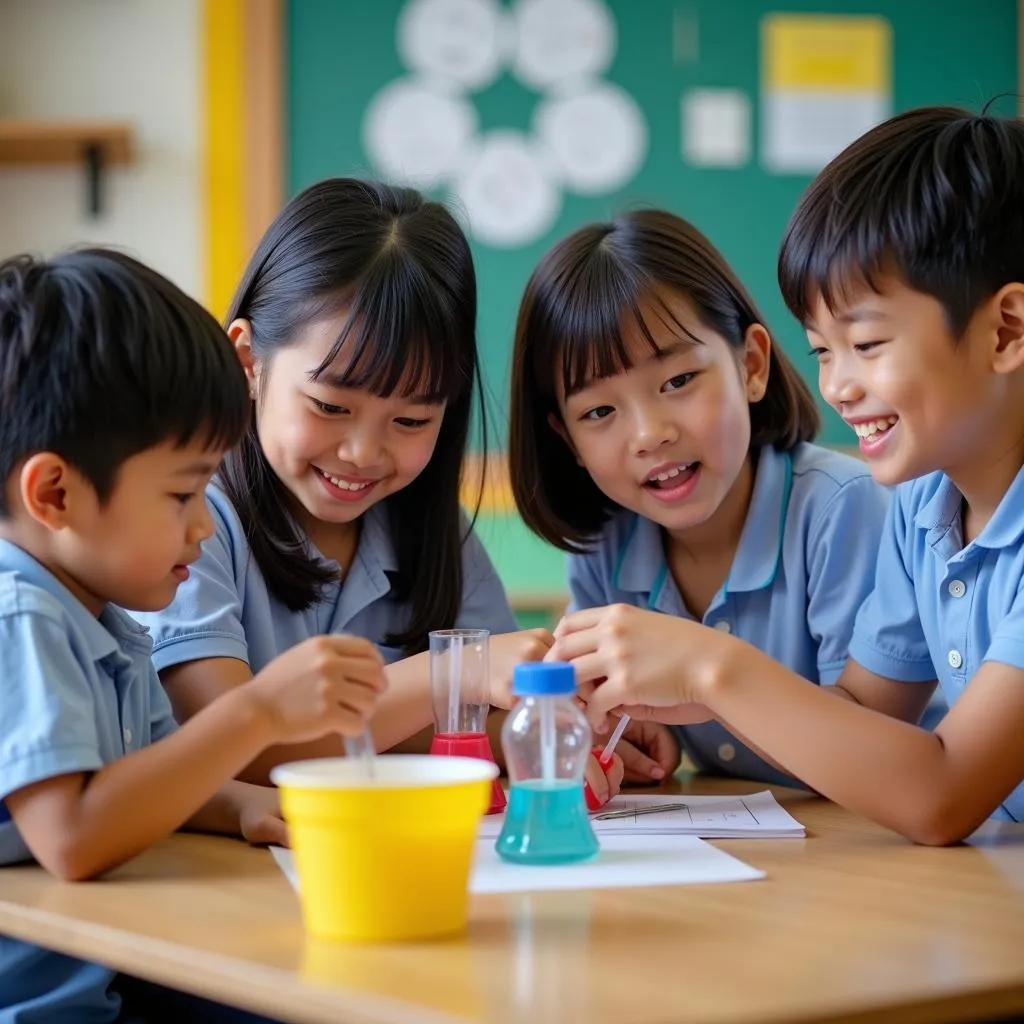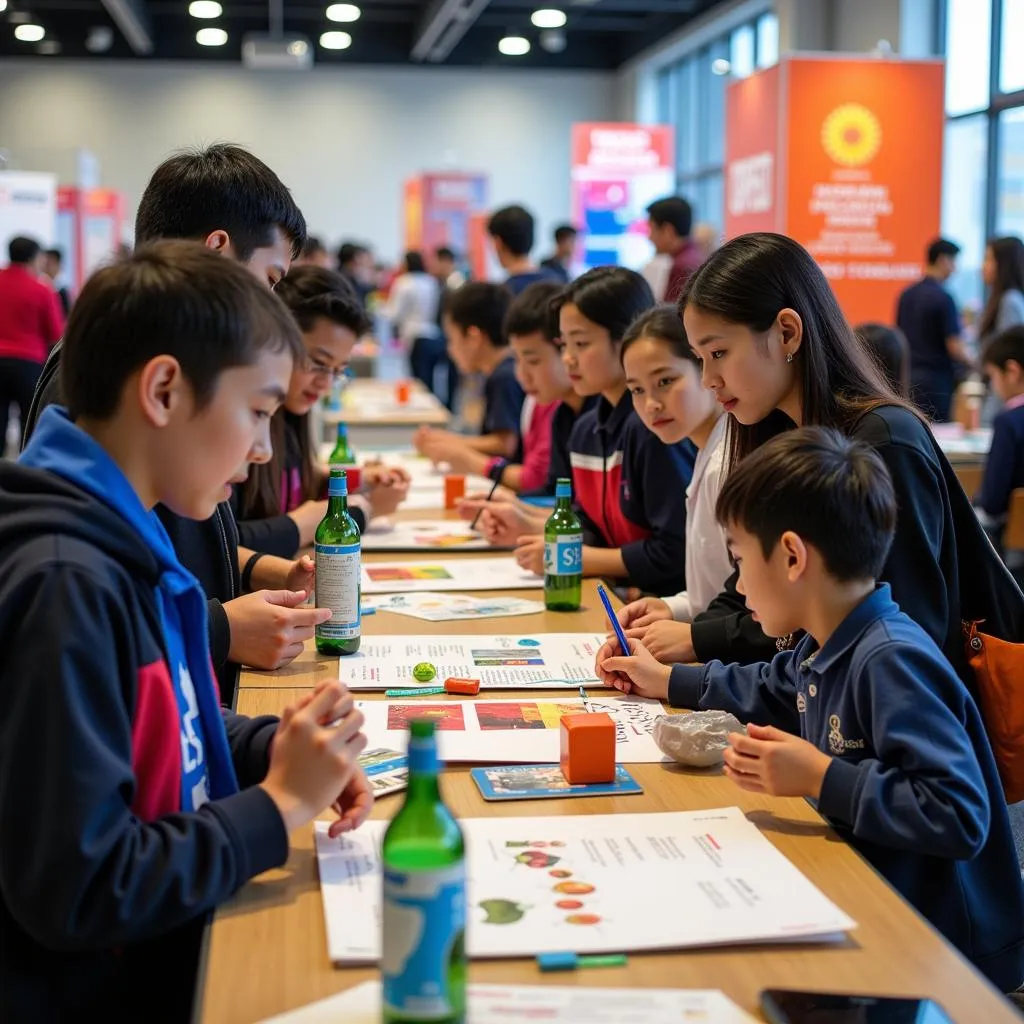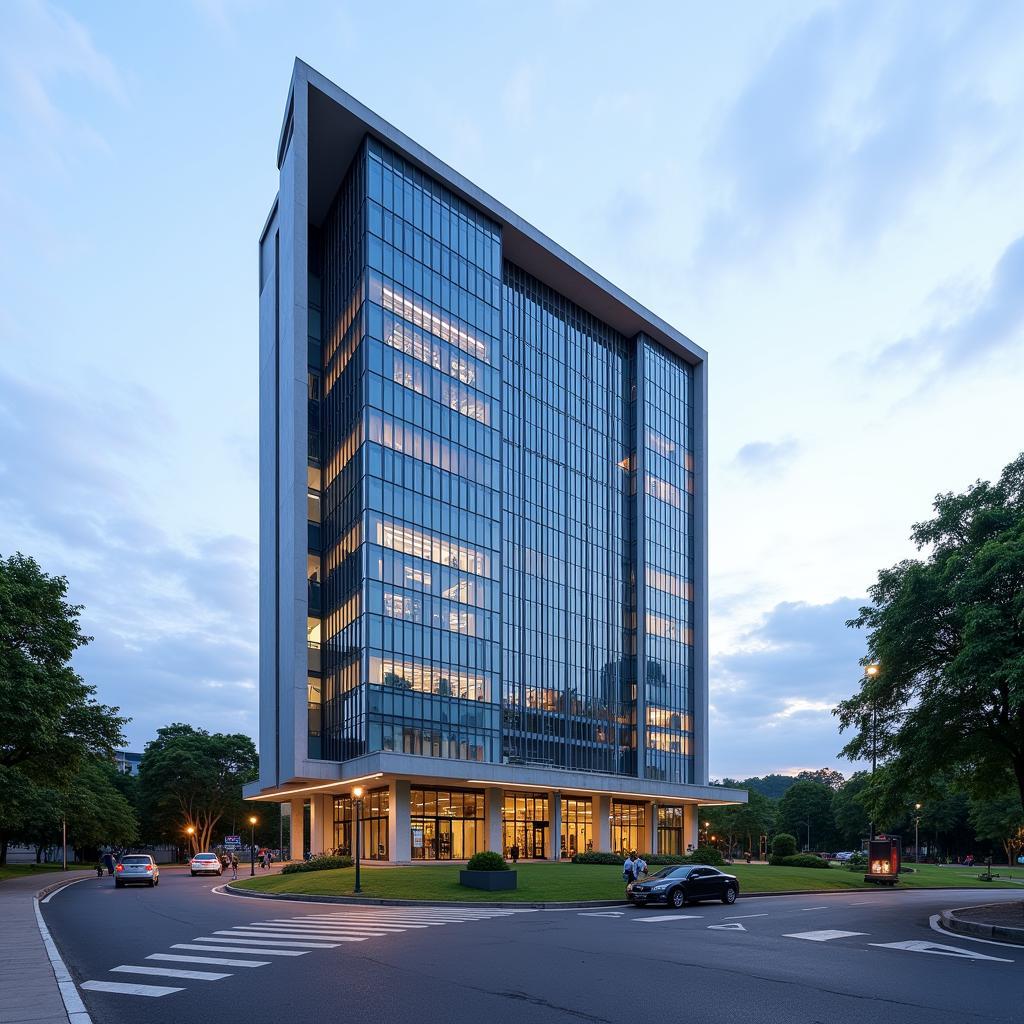The realm of ASEAN science in primary education is a vibrant tapestry woven with threads of curiosity, discovery, and the joy of learning. This crucial stage in a student’s life lays the foundation for a lifelong love of science and an appreciation for the diverse scientific achievements within the ASEAN region.
Nurturing Young Minds: The Importance of Early Science Education
From a young age, children possess an innate curiosity about the world around them. They are natural explorers, constantly asking “why?” and “how?”. ASEAN science education in the primary years harnesses this natural inquisitiveness, providing a structured framework for children to investigate, experiment, and make sense of their surroundings.
Early exposure to science, technology, engineering, and mathematics (STEM) concepts not only equips students with essential knowledge but also cultivates critical thinking, problem-solving abilities, and a spirit of innovation. These skills are not confined to the science classroom; they are transferable to various aspects of life, empowering students to become analytical thinkers and effective problem solvers.
 Students Engaging in Hands-on Science Experiment in an ASEAN Primary School
Students Engaging in Hands-on Science Experiment in an ASEAN Primary School
ASEAN Dimensions: Integrating Regional Perspectives in Science Education
One of the unique aspects of ASEAN science education is the integration of regional perspectives and examples. Rather than solely focusing on global scientific advancements, classrooms across ASEAN countries highlight the contributions of local scientists, researchers, and innovators.
This approach fosters a sense of pride and identity among students, showcasing the scientific achievements of the ASEAN region and inspiring them to contribute to its future development. Moreover, it allows students to relate scientific concepts to their local environment and cultural context, making learning more meaningful and relevant.
For instance, when learning about biodiversity, students in Indonesia might delve into the rich flora and fauna of the Indonesian archipelago, while students in Vietnam could explore the unique ecosystems of the Mekong Delta. This localized approach deepens their understanding of scientific principles while simultaneously fostering an appreciation for the natural wonders within their own countries.
 Students Presenting Science Projects at an ASEAN Science Fair
Students Presenting Science Projects at an ASEAN Science Fair
Collaborative Learning: Fostering Regional Cooperation Through Science
Beyond integrating regional perspectives, ASEAN science education emphasizes collaborative learning and cross-border partnerships. Student exchange programs, joint research projects, and regional science competitions provide opportunities for students from different ASEAN countries to connect, share ideas, and learn from one another.
These initiatives not only enhance their scientific knowledge but also foster intercultural understanding, empathy, and a sense of ASEAN community. By working together on shared challenges, students develop essential 21st-century skills such as communication, collaboration, and global citizenship.
Looking Ahead: The Future of ASEAN Science Education
As the ASEAN region continues to evolve and face new challenges, the role of science education becomes increasingly critical. To prepare students for the demands of the 21st century, ASEAN science education must embrace innovation, creativity, and a forward-thinking approach.
This includes incorporating emerging technologies into the curriculum, such as artificial intelligence, robotics, and data science. Additionally, there is a growing need to equip students with the skills to address pressing global issues such as climate change, sustainable development, and public health crises.
 ASEAN Students Collaborating on a Robotics Project
ASEAN Students Collaborating on a Robotics Project
Conclusion: Inspiring the Next Generation of ASEAN Scientists
ASEAN science education in primary schools plays a pivotal role in shaping the minds of future generations. By nurturing curiosity, promoting regional perspectives, and fostering collaborative learning, ASEAN countries are cultivating a new generation of scientists, innovators, and problem solvers who will contribute to the region’s continued growth and prosperity. As we invest in their education today, we empower them to create a brighter and more sustainable future for ASEAN tomorrow.
FAQ
1. What are some key features of ASEAN science education?
ASEAN science education emphasizes hands-on learning, regional perspectives, and collaborative projects.
2. How does ASEAN science education benefit students?
It fosters critical thinking, problem-solving, and an appreciation for the region’s scientific achievements.
3. What role does technology play in ASEAN science education?
Technology is increasingly integrated into the curriculum, preparing students for the demands of the 21st century.
4. How does ASEAN science education promote regional cooperation?
It encourages student exchanges, joint research, and regional competitions, fostering intercultural understanding.
5. What is the long-term vision for ASEAN science education?
To cultivate a new generation of scientists and innovators who can address global challenges and contribute to ASEAN’s development.
Need More Information?
For more insights into ASEAN initiatives and educational opportunities, explore our website’s resources or reach out to us directly.
Contact us:
- Phone: 0369020373
- Email: aseanmediadirectory@gmail.com
- Address: Thon Ngoc Lien, Hiep Hoa, Bac Giang, Vietnam
Our dedicated team is available 24/7 to assist you.

